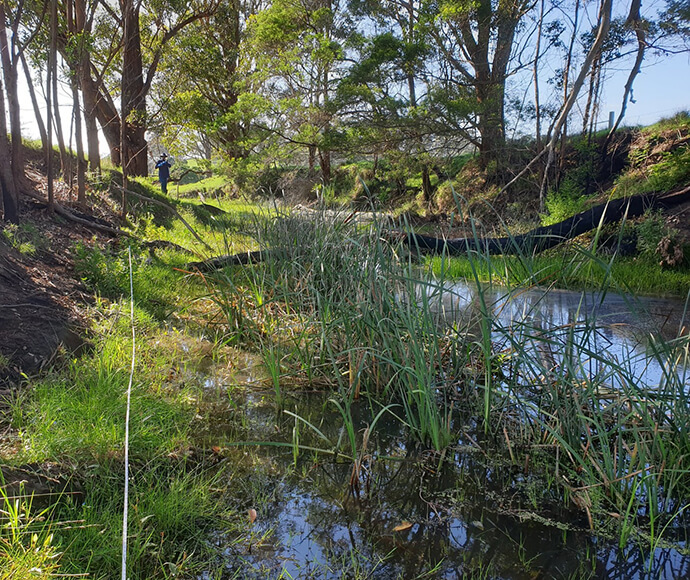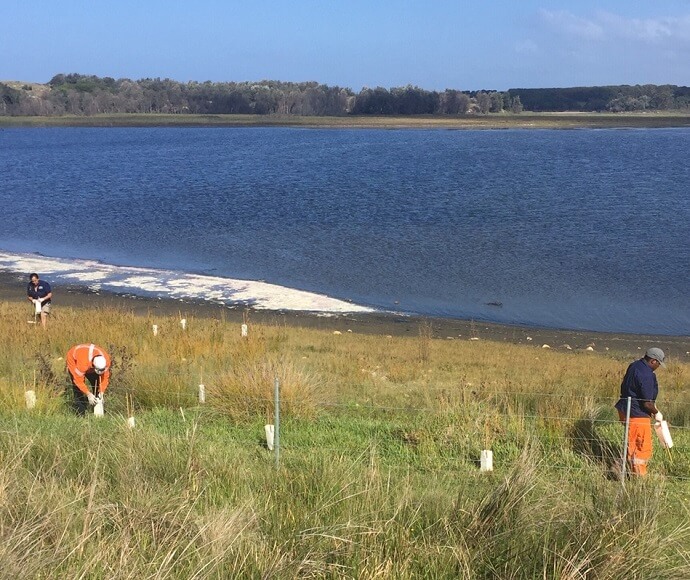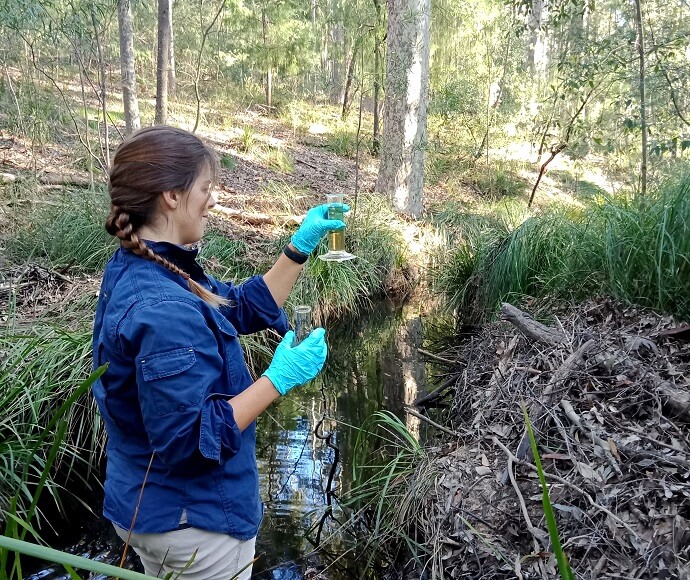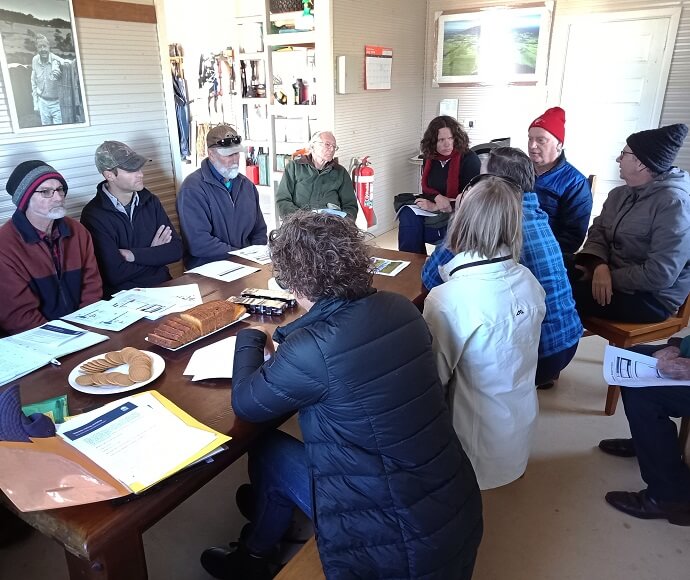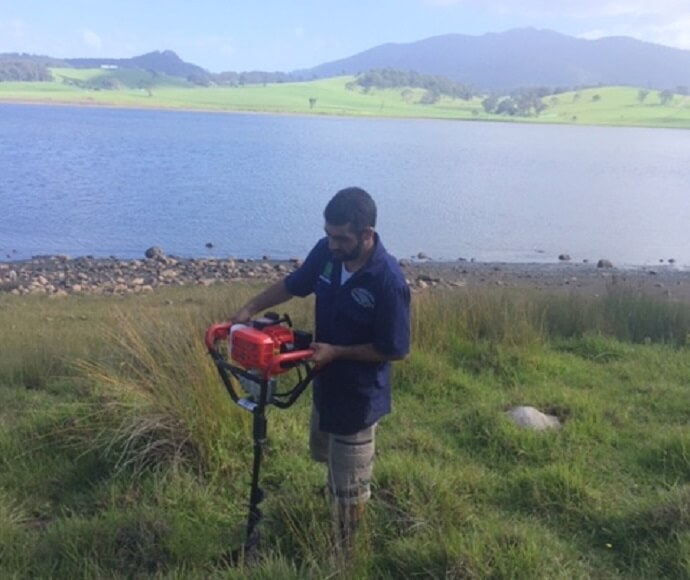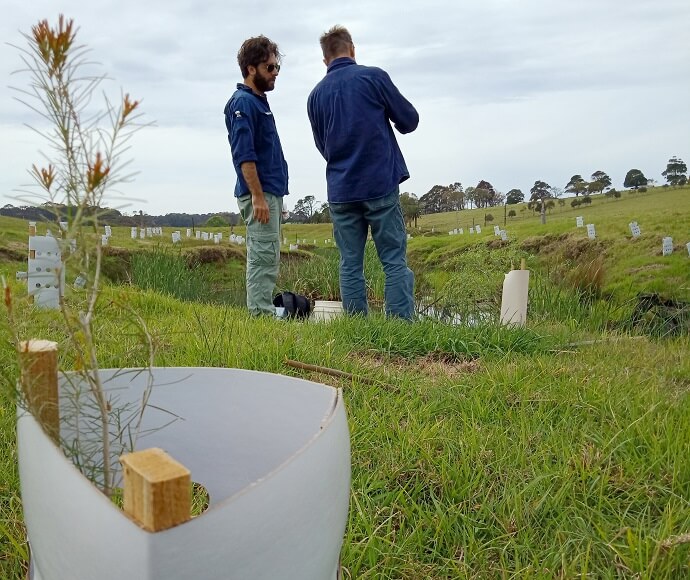At Victoria Creek and Tilba Tilba Lake on the NSW South Coast, many years of vegetation clearing and livestock accessing the water have caused banks to erode, and sedimentation and bacterial contamination of the waterways from livestock trampling the banks and animal waste washing into the waterway.
Compared to coastal lakes across New South Wales, the lake has received poor to fair ecological health scores.
To improve the health of these waterways, the Marine Estate Management Strategy has funded a series of rehabilitation activities since 2019, coordinated by South East Local Land Services with landowners and local Wagonga Aboriginal rangers.
Our scientists were engaged to develop a scientifically rigorous monitoring program to better understand the ecosystem health of Victoria Creek and Tilba Tilba Lake and determine the baseline conditions for the system.
These activities will have a range of social, economic and environmental benefits for the surrounding environment and landowners. Hear from Tilba Tilba community members about their experiences in the video below.
Rehabilitation actions and expected benefits
Landowners and Wagonga Aboriginal rangers worked together to:
- replant riparian vegetation (the trees and shrubs lining the waterways) with appropriate native species
- install new fencing to prevent cattle from entering the waterways
- add water troughs to provide new drinking points for livestock.
Over time, we expect to see:
- creek banks stabilising due to increased riparian vegetation
- less erosion
- habitat quality improving and more shade along the creek
- greater diversity of species, including frogs, fish and water-bugs.
By excluding livestock near the creek and lake, we will also see improvements to ground cover, instream vegetation and bacterial and nutrient levels in the water. As a result of improvements to the ecosystem, health and productivity of livestock will also benefit from:
- better shelter from more trees
- access to cleaner water, increasing their water and forage intake, and promoting weight gain and higher milk production
- reduced risk of stock diseases, including mastitis.
More native vegetation may also increase land value, and landowners may have a greater sense of wellbeing from their contribution to nature conservation.
It may be many years until we see big improvements in Victoria Creek and Tilba Tilba Lake, but the more people that come on board to make improvements on their land along the creek and lake system, the greater the results will be.
Monitoring and baseline study results
It is well known that it often takes many years to see an improvement in ecological health after positive actions such as riparian replanting and stock exclusion fencing are undertaken, and so long-term monitoring is important.
Our scientists have assessed several key environmental indicators at Victoria Creek and Tilba Tilba Lake to understand the baseline conditions of the system.
This data will help us track improvements over time by comparing it to similar data collected through future routine monitoring programs.
In 2019, about 43% of the catchment was covered with woody vegetation. Most of the woodland and forest area is in the upper catchment of Victoria Creek within the Gulaga National Park, and in the northeast of the catchment at Corunna State Forest.
Our baseline study found that Victoria Creek is still in relatively poor condition, with slumped and eroded stream banks, high concentrations of nutrients (nitrogen and phosphorus), low dissolved oxygen, and faecal bacteria. Water quality at Tilba Tilba Lake tends to fluctuate, as well as having high concentrations of nutrients and poor clarity, which can lead to algal blooms and poor visibility.
The good news is that 3 species of frogs, abundant and diverse fish species and the presence of water bug communities suggest the creek has much potential to recover, given the right conditions. Fencing has already reduced grazing pressure on the riparian vegetation along Victoria Creek and on saltmarsh on the Tilba Tilba Lake's foreshore, allowing it to recover and spread.
Community engagement and future monitoring
The monitoring of water quality, macroinvertebrates, vegetation and saltmarsh communities around Victoria Creek and the Tilba Tilba Lake system continues with great support from the Tilba Tilba local community.
Through monitoring and continued rehabilitation works, we expect an improvement in the health of the Tilba Tilba Lake and Victoria Creek system and many other benefits for landowners and the wider community.
The NSW Government funds these projects under the 10-year Marine Estate Management Strategy, which was developed by the NSW Marine Estate Management Authority to coordinate the management of the marine estate.


